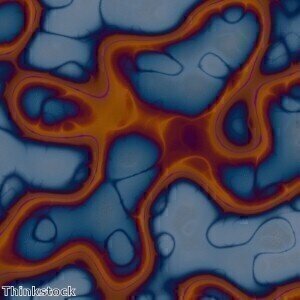News
Lifting the Mask on COVID-19
Nov 12 2020
Diamond Light Source, the UK’s national synchrotron has released a new video animation showing how the SARS-CoV-2 (or COVID-19) virus infection mechanism works at the cellular level. The intention is to inform and share with the public the knowledge that international scientists working with Diamond have uncovered about how the virus replicates itself. The genome replication, assembly and egress of the virus is a multistage process that is critically important as it bears the means of medical intervention to stop infection.
The animation combines images achieved using various techniques from synchrotron-based crystallography and imaging to high resolution Cryo-electron microscopy to depict the entire SARS-CoV-2 infected cell. This unique approach gives a holistic view of SARS-CoV-2 infection, from the whole cell to individual molecules, revealing unseen pathways of the virus assembly and egress, and the cellular structural changes caused by the virus. Further development in the area of labelling individual viral and relevant host proteins involved in the process will be essential to allow a correlative structural analysis at the molecular level.
Professor David Stuart, Life Sciences Director at Diamond and Joint head of Structural Biology at the University of Oxford, said:
“At the beginning of the pandemic we didn’t know exactly what the virus looked like but in record time, it has been dissected in great detail. This is really important because by understanding how it works and mapping out the infection mechanism, we are much further closer to our goal of finding therapies. Our hope is that this animation will help articulate achievements so far.
“Structural understanding of the viral components is key to the discovery of therapeutics and so far work has concentrated on virial spikes, main protease, RNA polymerase and other non-structure proteins, as well as spike interactions with host receptor ACE2 and neutralising antibodies, using a range of tools from synchrotron based X-ray crystallography to cryoEM and cryoET.
“These latter two techniques are essential for in vitro and in situ study in the context of a virion. However, all these techniques will be important in tackling the challenges that lie ahead with the remaining viral components, which are small, flexible and heterogeneous, and some are even membrane bound, but they are pivotal in understanding the entire virus architecture and its genome organisation.”
Further information online
Digital Edition
Lab Asia Dec 2025
December 2025
Chromatography Articles- Cutting-edge sample preparation tools help laboratories to stay ahead of the curveMass Spectrometry & Spectroscopy Articles- Unlocking the complexity of metabolomics: Pushi...
View all digital editions
Events
Jan 21 2026 Tokyo, Japan
Jan 28 2026 Tokyo, Japan
Jan 29 2026 New Delhi, India
Feb 07 2026 Boston, MA, USA
Asia Pharma Expo/Asia Lab Expo
Feb 12 2026 Dhaka, Bangladesh



















